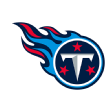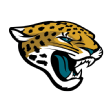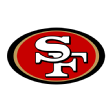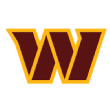Minnesota TimberwolvesFact or Fiction: The Timberwolves should spend their cap space this offseason.
Kevin Pelton: Fiction. Minnesota will be better positioned to strike in free agency in 2017, when the team will likely be a better draw for top free agents and will have more money available to spend.
More questions:
New York KnicksIs it time for the Knicks and Carmelo Anthony to part ways?
Amin Elhassan: Elhassan: Melo's no-trade clause notwithstanding, it's time to aggressively shop him. If they can get a first-round pick for him, great. But waiting until after the first week of free agency might yield some desperate suitors who have struck out in the market and want something to show for their cap space.
More questions:
Portland Trail BlazersWhat's missing in Portland?
Bradford Doolittle: As well as the Lillard-McCollum-Crabbe backcourt played, in the long run the Blazers are going to need a dynamic defensive presence in the middle to make it work on both ends. Also, you'd like to see a little more of an offensive standout at small forward, though I really like the way Al-Farouq Aminu has come along.
More questions:
San Antonio SpursFact or fiction: In terms of basketball decisions, Tim Duncan and Manu Ginobili should retire.
Kevin Arnovitz: In basketball terms, probably. But it's unseemly for anyone to tell a grown professional when and why they should stop working.
More questions:
Washington WizardsHow likely are the Wizards to sign Kevin Durant with Brooks now in Washington?
Tom Haberstroh: 5 percent. The Wizards had a disastrous season, and there are a lot of questions surrounding Bradley Beal's health going forward. I'm not sure Durant sees enough reliable star power in the nation's capital to tempt him away from Westbrook.
More questions:
Kevin Pelton: Fiction. Minnesota will be better positioned to strike in free agency in 2017, when the team will likely be a better draw for top free agents and will have more money available to spend.
More questions:
- Three pros and cons of the Thibodeau hire?
- Fact or Fiction: We have seen the Wolves' next playoff starting lineup.
- What intrigues you most about the Wolves going forward?
- How many games will Minnesota win next season?
New York KnicksIs it time for the Knicks and Carmelo Anthony to part ways?
Amin Elhassan: Elhassan: Melo's no-trade clause notwithstanding, it's time to aggressively shop him. If they can get a first-round pick for him, great. But waiting until after the first week of free agency might yield some desperate suitors who have struck out in the market and want something to show for their cap space.
More questions:
- Was Jeff Hornacek the best hire for New York?
- What other moves do you expect from the Knicks this offseason?
- Is Phil Jackson part of the problem or part of the solution?
- If the Knicks were a stock and you were looking five years ahead, would you buy, sell or hold?
Portland Trail BlazersWhat's missing in Portland?
Bradford Doolittle: As well as the Lillard-McCollum-Crabbe backcourt played, in the long run the Blazers are going to need a dynamic defensive presence in the middle to make it work on both ends. Also, you'd like to see a little more of an offensive standout at small forward, though I really like the way Al-Farouq Aminu has come along.
More questions:
- Who should be the primary center for Portland going forward?
- What other moves do you expect from the Blazers this offseason?
- Where will the 2016-17 Blazers finish in the standings?
- Fact or Fiction: Damian Lillard will win the West as a Blazer.
San Antonio SpursFact or fiction: In terms of basketball decisions, Tim Duncan and Manu Ginobili should retire.
Kevin Arnovitz: In basketball terms, probably. But it's unseemly for anyone to tell a grown professional when and why they should stop working.
More questions:
- Fact or fiction: Kevin Durant is in play for the Spurs.
- What other moves do you expect from the Spurs this offseason?
- Who should be the starting PG next season?
- Fact or fiction: Before he retires, Gregg Popovich will win one for the other ring finger.
Washington WizardsHow likely are the Wizards to sign Kevin Durant with Brooks now in Washington?
Tom Haberstroh: 5 percent. The Wizards had a disastrous season, and there are a lot of questions surrounding Bradley Beal's health going forward. I'm not sure Durant sees enough reliable star power in the nation's capital to tempt him away from Westbrook.
More questions:
- Was Brooks the best coaching hire for Washington?
- What other moves do you expect from the Wizards this offseason?
- Fact or Fiction: The Wizards have more than one future All-Star on their roster.
- How many games do you expect the Wizards win next season?








































